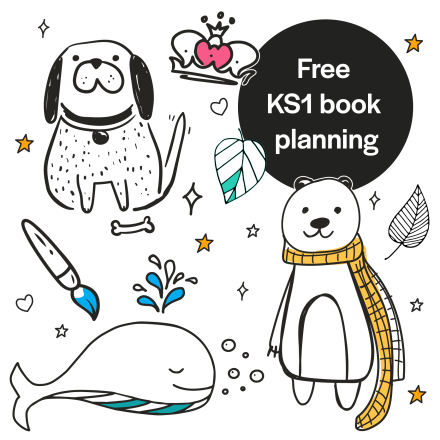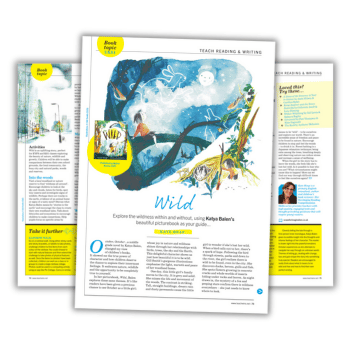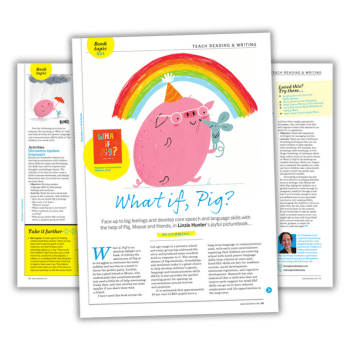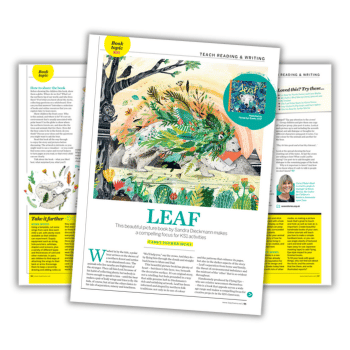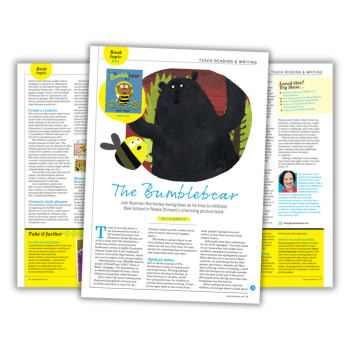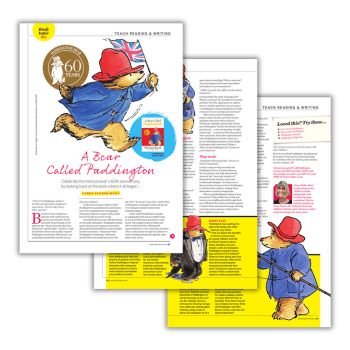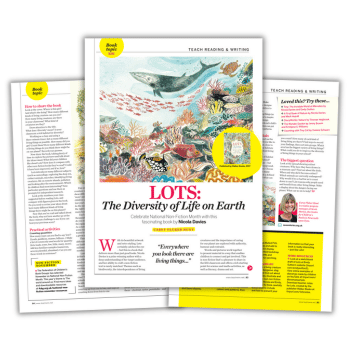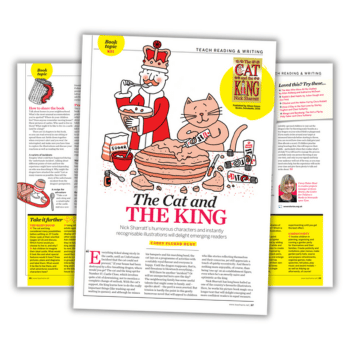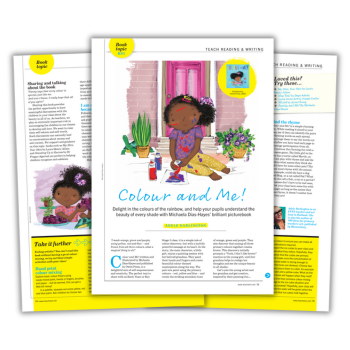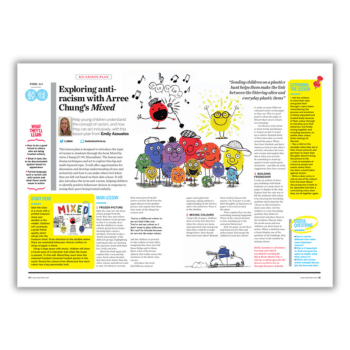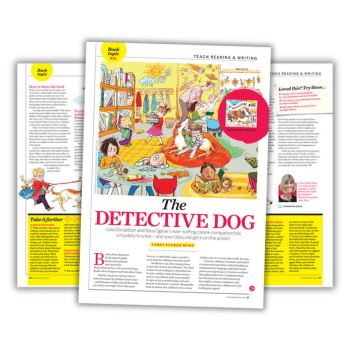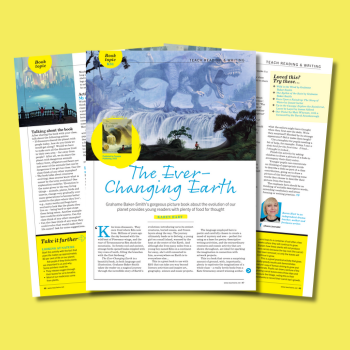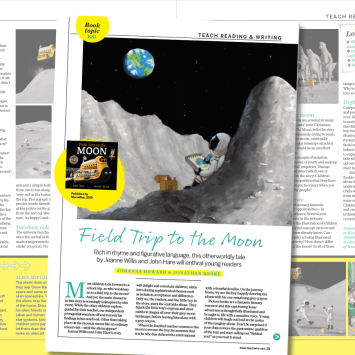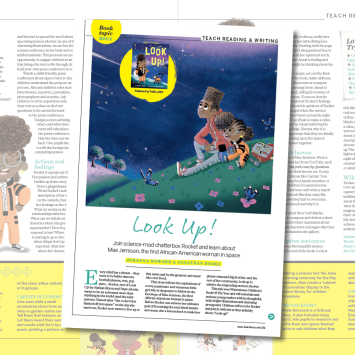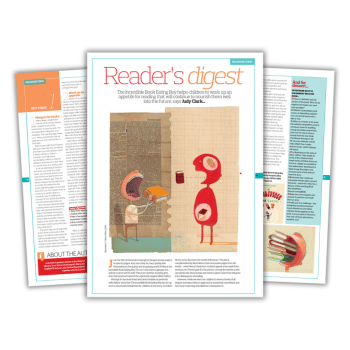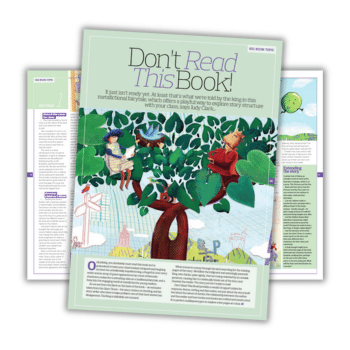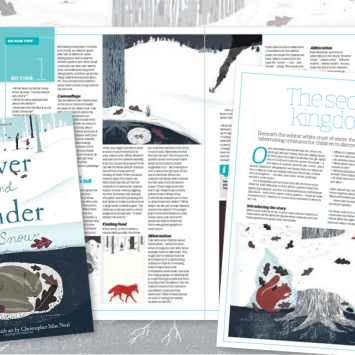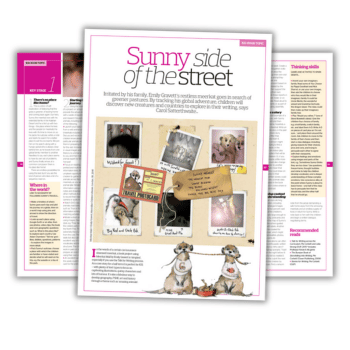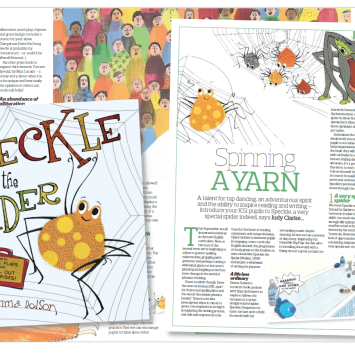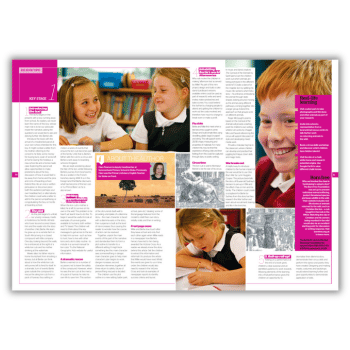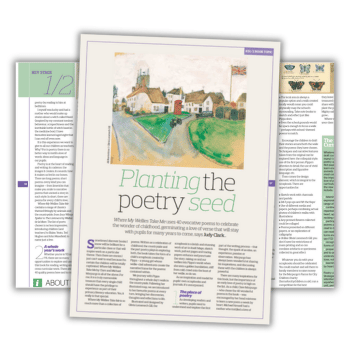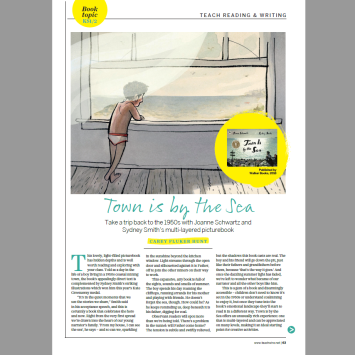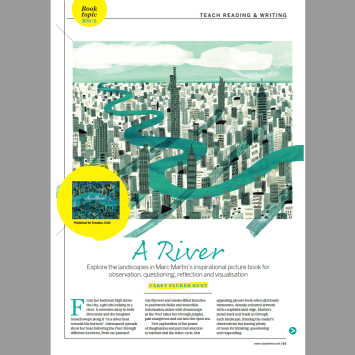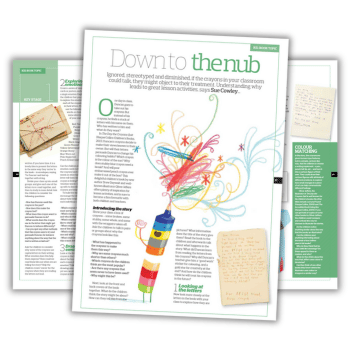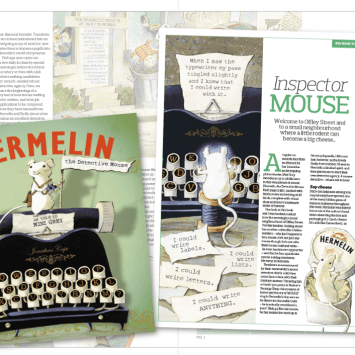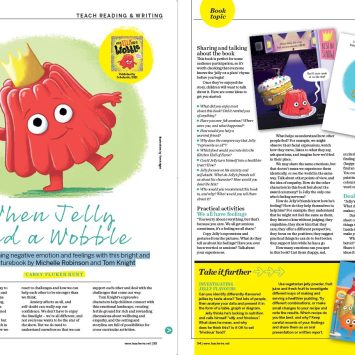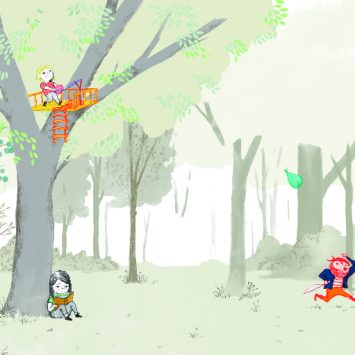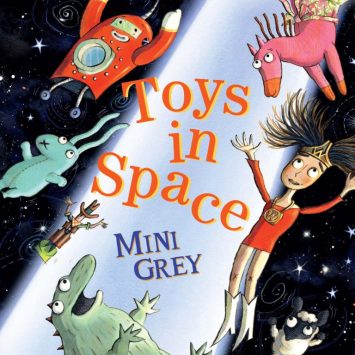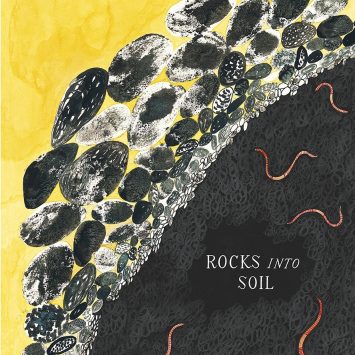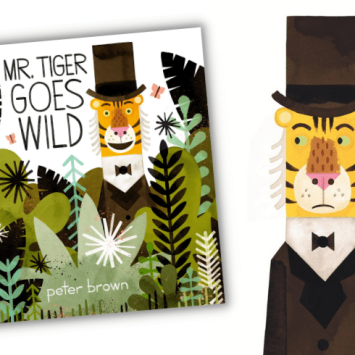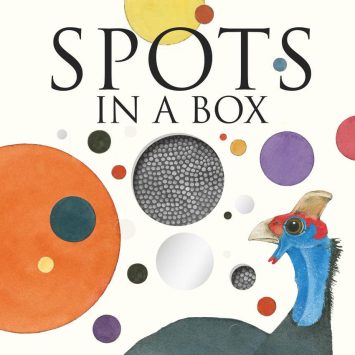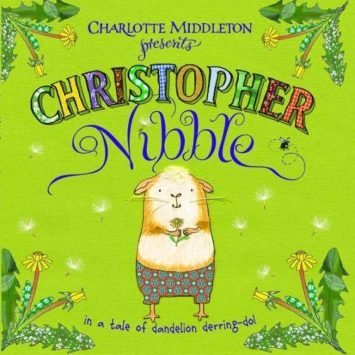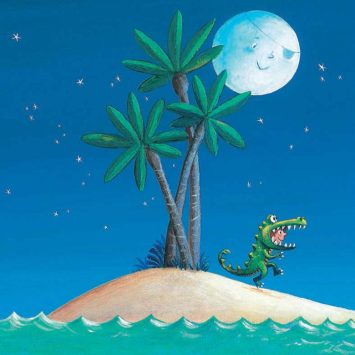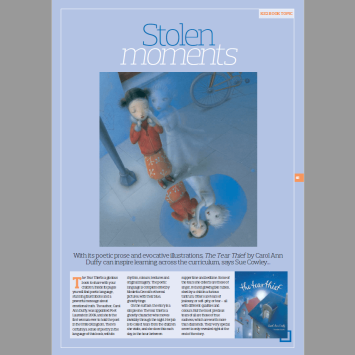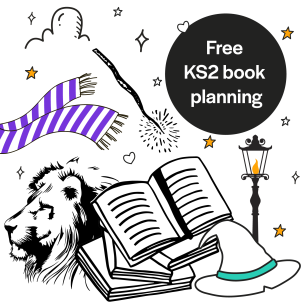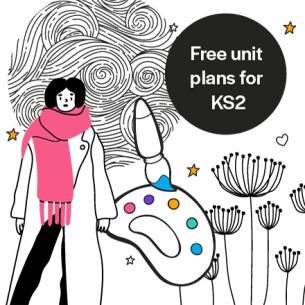KS1 books – Recommended by literacy experts
Passionate about books and want to plant a seed that will grow into a lifelong love of reading among your KS1 pupils?
Here, literacy experts share their top recommendations. These engaging stories, packed with rich language and thought-provoking themes, are excellent for supporting early literacy development, plus each book also has a free teaching ideas resource for you to download.
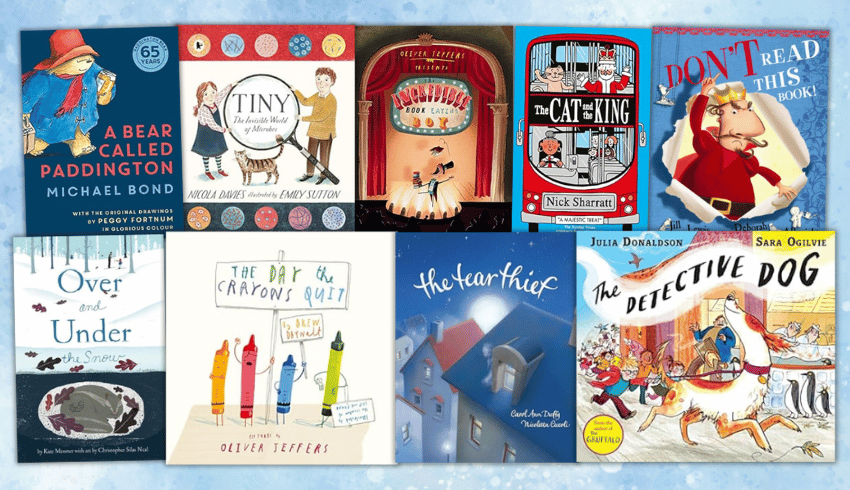
Carey Fluker Hunt’s favourite KS1 books
Carey Fluker Hunt is a writer, creative learning consultant, and former teacher with over 30 years of experience in children’s books. She is a founding member of Seven Stories, the National Centre for Children’s Books, where she spent many years as a creative projects manager.
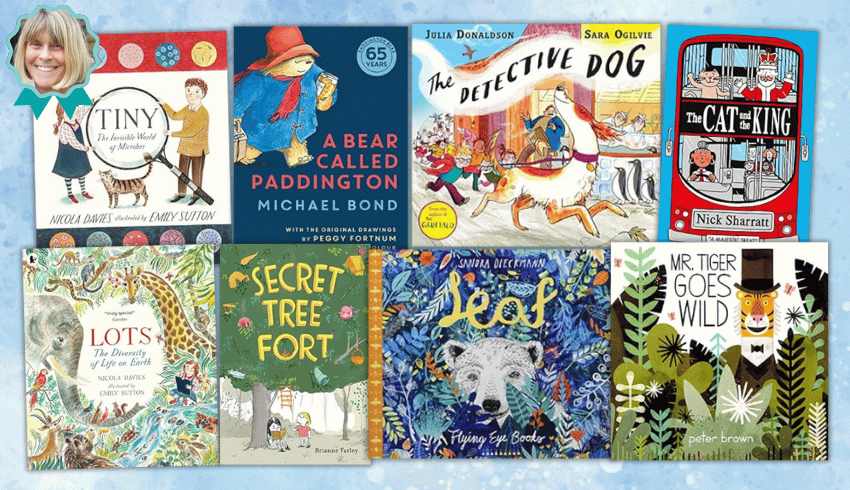
A Bear Called Paddington by Michael Bond
What? ‘Please look after this bear. Thank you’ said the label around the bear’s neck – and how could the Browns refuse such a polite request?
Paddington went home with them to eat marmalade sandwiches and the rest, as they say, is history. Described by his creator Michael Bond as ‘eternally optimistic’, Paddington stands up for fairness and common sense but is always getting himself into scrapes despite his best intentions.
Why? It’s Paddington’s combination of integrity, belief and joie de vivre that gives Bond’s stories their enduring appeal. A Bear Called Paddington remains as engagingly fresh and accessible today as it was in 1958 and is great fun to read aloud.
The chapters feature linked yet self-contained stories, offering rich opportunities for cross-curricular activities. There’s also plenty of scope for children to read on independently through the other titles in the series.
Download KS1 book activities for A Bear Called Paddington.
The Detective Dog by Julia Donaldson and Sara Ogilvie
What? Nell the dog loves visiting Peter’s school because the children read to her – until disaster strikes and someone steals the books overnight. Have they gone forever, or will Nell’s super-sensitive nose help the children track the thief?
Why? A former children’s laureate and author of numerous bestsellers, Julia Donaldson’s enthusiasm for language and belief in the power and importance of stories is evident throughout this book.
Complementing her rhyming text are illustrations by Sara Ogilvie, whose exuberant (and somewhat anarchic) childhood world holds great appeal.
Download KS1 book activities for The Detective Dog.
Lots by Nicola Davies
What? With its beautiful artwork and retro styling, Lots certainly catches the eye – but this is a book that delivers more than just good looks. The author explores themes such as biodiversity, the interdependence of living creatures and the importance of caring for our planet with authority, humour and restraint.
Why? Nicola Davies is a prize-winning author with a deep understanding of her target audience. Her ability to craft a non-fiction text is rarely matched.
Words and pictures work together to present material in a way that enables children to connect and get involved. This is non-fiction that’s a pleasure to share in the KS1 classroom and offers a rich starting point for science and maths activities, as well as literacy, drama and art.
Download KS1 book activities for Lots.
Secret Tree Fort by Brianne Farley
What? In this warm and true-to-life picture book, two siblings clash over how to spend their time outside. The younger one wants to play, while the older girl prefers to read.
Nothing can distract the older sister – until the little one claims the fort is made of sweets. Suddenly, they’re arguing, capturing the essence of sibling squabbles.
But when the younger admits it was all pretend, the older finally relents. The fort may not exist yet, she says, but “maybe we just need to build it.” And so they do.
Why? This KS1 book is a gem, with lots to enjoy, laugh about and unpack. It’s unusual to find a picturebook addressing a sibling relationship with such a sure touch as this one; these girls are feisty, with richly imagined inner worlds.
Their approaches to life may be different, but they’re not one-sided. Imagination and action coexist quite comfortably for both of them, and they feel very real.
It’s this emotional integrity along with Secret Tree Fort’s funny, fresh inventiveness, that makes it work so well at KS1.
Download KS1 book activities for Secret Tree Fort.
Leaf by Sanda Dieckmann
What? Washed in by the tide, a polar bear arrives on the shores of a northern forest and settles in an abandoned cave. The animals who live nearby are frightened of the stranger. Nobody is brave enough to speak to him – until the bear makes a pair of leafy wings and tries to fly.
He fails, of course, but at last the others listen to his tale of separation, misery and loneliness. We’ll help you,” say the crows. And they do – by flying him through the clouds and straight back home to Mum and Dad.
Why? This beautiful picture book for KS1 has plenty of heart – but there’s bite here, too, beneath the decorative surface. It’s an original story, not a retelling, but feels grounded in a way that adds genuine heft to Dieckmann’s rich and satisfying artwork.
Leaf has been informed and shaped by northern folk traditions: not only in its use of colour and the patterns that enhance its pages, but also in the darker aspects of the story.
Leaf’s separation from home and family, the threat of environmental imbalance and the mistrust of the ‘other’ that is so evident throughout.
This is a book that appeals across a wide age range and makes a compelling focus for creative projects in the KS1 classroom.
Download KS1 book activities for Leaf.
The Cat and the King by Nick Sharratt
What? If a fire-breathing dragon has destroyed your house, where would you go? The cat and the king opt for Number 37, Castle Close, which involves quite a bit of downsizing, not to mention a complete change of outlook.
With the cat’s support, the king learns how to do the really important things (like washing-up and waiting in queues). Then the dragon reappears and threatens to blowtorch everything. Will there be another ‘incident’? Or will an unexpected hero save the day?
Why? This gently humorous book will appeal to KS1 children who like stories reflecting themselves and their concerns, yet still appreciate a touch of quirky eccentricity.
Nick Sharratt has long been hailed as one of the country’s favourite illustrators. Here, he works his picture book magic on a longer text that will delight emerging and more confident readers in equal measure.
Download KS1 book activities for The Cat and the King.
Mr Tiger Goes Wild by Peter Brown
What? Mr Tiger wears clothes and lives in the city with his animal neighbours. Why, then, does he feel as if something’s not quite right? He’s forced to take matters into his own paws – ditching his top hat and escaping to the wilderness.
Why? This immensely appealing book delights the eye and enriches the mind. Brown’s carefully planned and joyfully executed artwork adds depth and conviction to the story, which offers teachers and KS1 children a reading-for-pleasure experience, as well as an inviting starting point for further work.
The central theme, which considers when it’s OK to act on instinct, will almost certainly resonate with a class of five-year-olds trying to get to grips with school rules, too.
Download KS1 book activities for Mr Tiger Goes Wild.
Spots in a Box by Helen Ward
If you were a guinea fowl and your plumage didn’t look quite right, what would you do? Our main character pens a letter saying ‘please send spots’. The next day sees the arrival of a promising package.
However, whilst the box does contain spots, unfortunately, they are not the right kind. Thus begins an entertaining and visually sumptuous exploration of successive incorrect deliveries, before our guinea fowl receives a package of spots that are ‘wrong in the right sort of way’.
Why? Dedicated to the ‘quietly eccentric’, Spots in a Box is an exuberant read, complemented by a robust and satisfying rhyming text.
This is a picture book that less confident readers will enjoy. It also has much to offer a more sophisticated audience and makes an excellent starting point for creative projects right across the curriculum.
Download KS1 book activities for Spots in a Box.
Tiny: The Invisible World of Microbes by Nicola Davies and Emily Sutton
What? Tiny takes a look at the invisible world of microbes. Author Nicola Davies knows her readers, introducing her subject in a friendly-yet-respectful manner, and in a way that makes no assumptions about prior knowledge.
She provides hard facts, but always in context, and complex ideas are explored in a way that makes it possible for children to relate.
Why? This is an information book that’s as aesthetically pleasing as it is authoritative, and one that has much to offer KS1 children.
It brings science and art together, warmly and confidently, in a way that makes perfect sense. Read it, add it to your book corner, and let it inspire you to create some wonderful learning opportunities for your class.
Download KS1 book activities for Tiny: The Invisible World of Microbes.
Judy Clark’s favourite KS1 books
Judy Clark serves as the primary adviser at the National Literacy Trust. In addition, she is an English ITE lecturer and a Talk4Writing adviser, working alongside Pie Corbett.
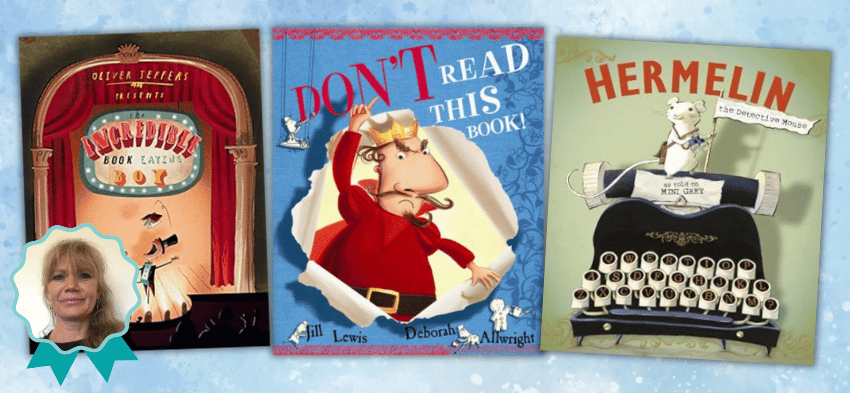
Hermelin: the Detective Mouse by Mini Grey
What? Hermelin is not just any mouse – he’s one who finds he can read and write and has a particular eye for solving mysteries. Residents are enamoured by their community’s secret detective, that is until they come face to face with their mystery saviour.
All is not lost, however. The lovely Emily from number 33 sees in Hermelin a kindred spirit, and they join forces to start their own detective agency.
Why? Each page is jam-packed with labels, notes and writing of all kinds, complete with visual clues and Grey’s trademark sense of humour.
One look at this book and I was hooked, sucked in to the seemingly normal neighbourhood of Offley Street.
Download KS1 book activities for Hermelin: the Detective Mouse.
Don’t Read This Book by Jill Lewis and Deborah Allwright
What? This story centres on the King and his story writer who have a major problem: one of their best stories has disappeared. What ensues is a romp through the land searching for the missing pages of the story.
We follow the indignant and seemingly paranoid King who thinks, quite rightly, that an outside presence is watching him. This causes him to continually break out of the story and chastise the reader. The story just isn’t ready to read!
Why? Don’t Read This Book makes for a refreshing take on a traditional fairytale, and a foray into the engaging world of metafiction for young readers.
It provides a wealth of opportunities for response, drama, writing and discussion, not just about the story itself but about the nature of stories, the relationship between the author and the reader and how we craft and construct books and stories. It’s a perfect multilayered gem to explore a few pages at a time
This book is guaranteed to have your class hooked, intrigued and laughing out loud.
Download KS1 book activities for Don’t Read This Book.
The Incredible Book Eating Boy by Oliver Jeffers
Just the title of this book is enough to intrigue young readers to open its pages. And, once they do, they quickly lose themselves in the quirky and surprising world of Henry, the Incredible Book Eating Boy.
In the story, we follow Henry as he discovers the world of literature. Illustrations that incorporate pages from old books complement the plot.
Why? This is yet another amazing gem from the hand and mind of the supremely original Oliver Jeffers. Perhaps it’s because hand and mind combine so perfectly with Jeffers’ work that The Incredible Book Eating Boy serves up such a visual and mental feast for children.
It’s the perfect concept for teachers who are However, while we want our children to devour books of all shapes and sizes, Henry’s approach is somewhat more literal, and has some surprising and hilarious consequences.
Download KS1 book activities for The Incredible Book Eating Boy.
Sue Cowley’s favourite KS1 books
Sue Cowley is an experienced teacher, writer and presenter specialising in behaviour management and creative teaching. She has authored 30 books, contributed to major educational publications and developed training materials for the BBC and Open University.
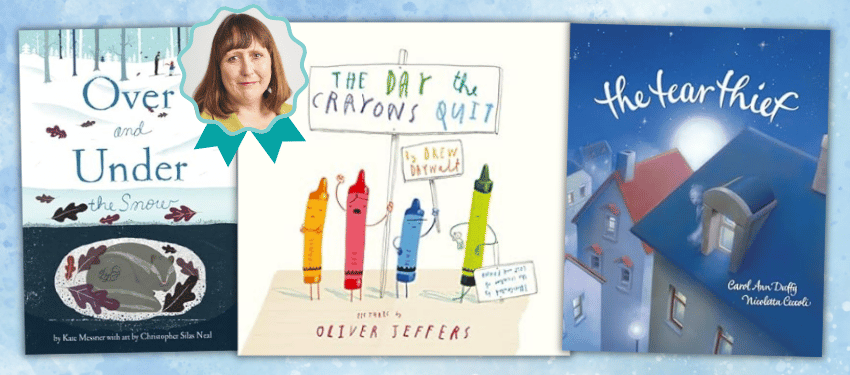
Over and Under the Snow by Kate Messner
What? Over and Under the Snow tells the story of a small girl and her father who are skiing home. As they pass through the woods, the girl spots lots of creatures that live above the snow.
Meanwhile, her father tells her about all the creatures that are hidden beneath the snow, in their ‘secret kingdom’.
Why? This is a delightful picture book that will entrance your children. Kate Messner’s story offers a perfect way into exploring habitats.
The icy illustrations by Christopher Silas Neal – with their subtle colour palette – could be used to inspire your children to create some wonderful wintery art, too.
Download KS1 book activities for Over and Under the Snow.
The Day the Crayons Quit by Drew Daywalt and Oliver Jeffers
What? One day in class, Duncan goes to take out his crayons. But instead of his crayons, he finds a stack of letters with his name on them. Who has written to him and what do they want? Will the letters persuade Duncan to change his colouring habits?
Why? This delightful children’s book by author Drew Daywalt and illustrator Oliver Jeffers offers plenty of inspiration for lesson activities, and is already a firm favourite with many KS1 children and teachers.
Download KS1 book activities for The Day the Crayons Quit.
The Tear Thief by Carol Ann Duffy
What? On the surface, this story is a simple one. The tear thief is a ghostly character who moves invisibly through the night. Her job is to collect tears from the children she visits, and she does this each day, in the hour between suppertime and bedtime.
Some of the tears she collects are those of anger, red and glowing like rubies, shed by a child in a furious tantrum. Others are tears of jealousy, or self-pity, or fear – all with different qualities and colours.
But the most precious tears of all are those of true sadness, which are worth more than diamonds. Their very special secret is only revealed right at the end of the story.
Why? The Tear Thief is a glorious book to share with KS1 children. Inside its pages you will find poetic language, stunning illustrations and a powerful message about emotional truth.
The author, Carol Ann Duffy, was appointed Poet Laureate in 2009 – the first woman ever to hold the post in the United Kingdom.
There’s certainly a sense of poetry in the language of this book, with its rhythm, colours, textures and original imagery. The poetic language is complemented by Nicoletta Ceccoli’s ethereal pictures, with their blue, ghostly tinge.
Download KS1 book activities for The Tear Thief.




